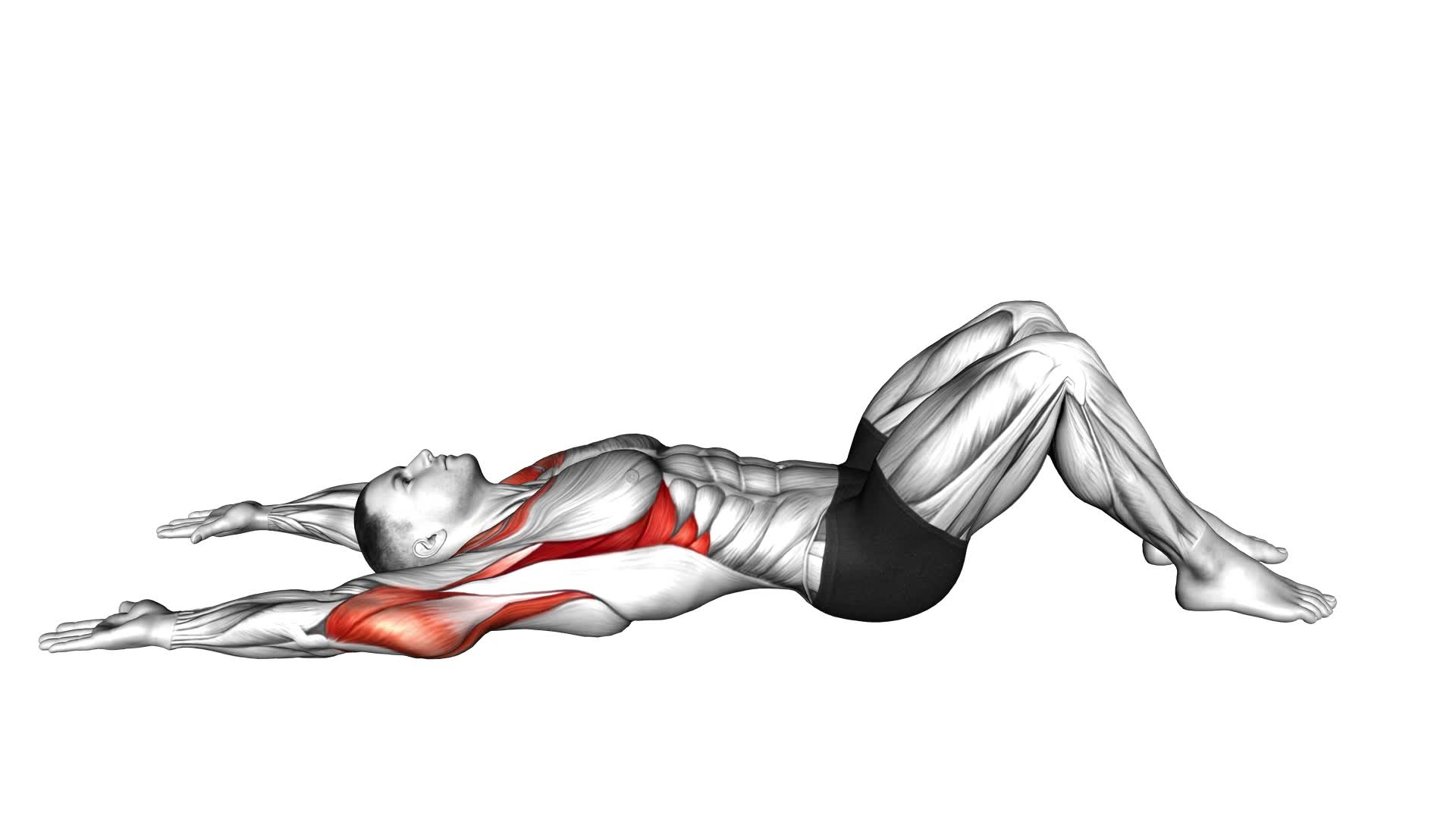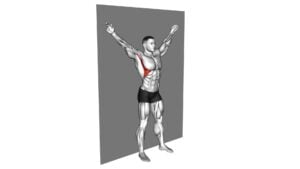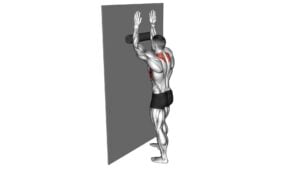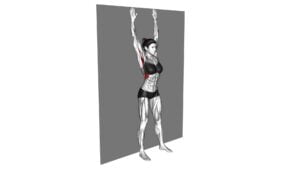Lying Floor Slide (male) – Video Exercise Guide & Tips

Get ready to level up your workout routine with the Lying Floor Slide. This video exercise guide and tips will show you how to properly perform this challenging move.
Watch This Exercise Video
Strengthen your core, improve flexibility, and target those hard-to-reach muscles. Avoid common mistakes and maximize your results with expert advice.
With variations and progressions, you can tailor the exercise to your fitness level. Get ready to slide into a stronger, fitter you.
Let's get started!
Key Takeaways
- Improved core stability
- Injury prevention
- Enhanced body awareness
- Better overall balance and posture
Benefits of the Lying Floor Slide
What are the benefits of the Lying Floor Slide for you?
The Lying Floor Slide exercise offers numerous benefits, especially when it comes to core stability and injury prevention. By engaging your core muscles, this exercise helps to strengthen and stabilize your entire midsection, including your abdominal muscles, lower back, and hips. This increased core stability can improve your overall balance and posture, making everyday movements more efficient and reducing the risk of injury.
Additionally, the Lying Floor Slide can help prevent injuries by targeting and strengthening the muscles that support your spine. When these muscles are strong, they can better absorb impact and support your spine during activities like running or lifting heavy objects. This can significantly reduce the risk of strain or injury to your back.
Furthermore, by incorporating the Lying Floor Slide into your workout routine, you can improve your overall body awareness and control. This exercise requires you to maintain proper form and control throughout the movement, which translates to better coordination and stability in other activities.
In summary, the Lying Floor Slide offers a range of benefits, including:
- Improved core stability
- Injury prevention
- Enhanced body awareness
- Better overall balance and posture
Proper Form and Technique
To perform the lying floor slide exercise with proper form and technique, it's important to focus on engaging your core throughout the movement. This helps to stabilize your body and prevent any strain on your lower back.
Core Engagement During
Engage your core properly for the lying floor slide exercise by maintaining a strong and stable midsection throughout the movement.
Core activation and stability are crucial to performing this exercise effectively and safely.
To engage your core, start by lying flat on your back with your knees bent and feet flat on the floor. Press your lower back into the ground and engage your abdominal muscles by pulling your belly button towards your spine. This will create a stable foundation for the exercise.
As you slide one leg out, maintain the engagement in your core to prevent your lower back from lifting off the ground.
Focus on keeping your core muscles activated and your midsection stable throughout the entire movement.
Avoiding Lower Back Strain
To avoid lower back strain during the lying floor slide exercise, maintain proper form and technique. Here are some tips to help you prevent injuries and strengthen your core:
- Engage your core muscles throughout the exercise to provide stability and support to your lower back.
- Keep your lower back pressed firmly against the floor to ensure proper alignment and reduce strain on the spine.
- Avoid arching your back or lifting your hips too high, as this can increase the risk of lower back strain.
- Perform the exercise with controlled and smooth movements, focusing on engaging your abdominal muscles rather than relying solely on momentum.
Benefits of Proper Technique
Using proper technique and form in the lying floor slide exercise will significantly enhance the effectiveness and impact of your workout. By ensuring proper core activation, you'll engage your abdominal muscles more effectively, leading to a stronger core and improved stability. This is crucial for overall body strength and injury prevention.
When performed with correct technique, the lying floor slide exercise also helps to improve posture and alignment, reducing the risk of strain on your lower back. By focusing on maintaining a neutral spine and avoiding excessive arching or rounding, you can protect your back and minimize the risk of injury.
Variations and Progressions
As you progress with the lying floor slide exercise, you can explore different variations and levels of difficulty. Here are some variations and progressions you can try:
- Single-leg floor slide: Instead of using both legs, try sliding one leg at a time while keeping the other leg extended. This variation will challenge your stability and balance.
- Weighted floor slide: To increase the intensity of the exercise, you can add weights to your ankles or hold a dumbbell between your feet. This will engage your muscles even more and provide a greater challenge.
- Bosu ball floor slide: Place a Bosu ball on the floor with the flat side up and perform the floor slide exercise on top of it. This variation adds an element of instability, requiring your core muscles to work harder to maintain balance.
- Elevated floor slide: Elevate your feet by placing them on a bench or step while performing the exercise. This will increase the range of motion and target your glutes and hamstrings even more.
Remember to start with the basic lying floor slide exercise and gradually progress to these variations as your strength and stability improve. Always listen to your body and make adjustments according to your fitness level.
Common Mistakes to Avoid
When performing the lying floor slide exercise, it's important to be aware of common mistakes to avoid in order to maximize the effectiveness and safety of the exercise. By understanding these common mistakes and taking steps to prevent them, you can ensure that you're getting the most out of your workout while minimizing the risk of injury.
One common mistake to avoid is using excessive momentum during the exercise. It's essential to maintain control throughout the movement and avoid any jerking or swinging motions. By using slow and controlled movements, you'll engage the targeted muscles more effectively and reduce the risk of strain or injury.
Another mistake to watch out for is arching your lower back. It's important to keep your back flat against the floor throughout the exercise. Arching your back not only reduces the effectiveness of the exercise but also puts unnecessary strain on your spine.
Lastly, be cautious of using your arms to push yourself up instead of relying on your core muscles. The lying floor slide exercise primarily targets your core, so it's crucial to engage those muscles to perform the movement correctly. Using your arms excessively can lead to improper form and decrease the effectiveness of the exercise.
Tips for Maximizing Results
To maximize your results with the lying floor slide exercise, there are a few key tips to keep in mind.
First, focus on effective workout techniques such as maintaining proper form and using the full range of motion.
Additionally, target specific muscle groups by adjusting the angle and intensity of the exercise.
Lastly, don't forget to incorporate proper nutrition to support muscle growth and recovery.
Effective Workout Techniques
Get the most out of your workouts by incorporating effective techniques that will help you maximize your results. Here are some tips to consider:
- Vary your workouts: Incorporate different exercises and training methods to challenge your muscles and prevent plateaus.
- Use proper form: Pay attention to your technique to ensure you're targeting the intended muscles and reducing the risk of injury.
- Listen to your body: Adjust your workouts based on how you feel. If something doesn't feel right, modify the exercise or take a rest day to prevent injuries.
- Prioritize recovery: Allow your body time to rest and recover between workouts. This includes getting enough sleep, eating nutritious foods, and incorporating active recovery activities like stretching or foam rolling.
Targeting Specific Muscle Groups
Now that you know how to incorporate effective workout techniques, let's dive into targeting specific muscle groups to maximize your results.
One way to achieve this is through muscle activation, which involves specifically engaging a particular muscle or group of muscles during an exercise. For example, if you want to target your glutes, you can focus on exercises like squats or lunges that activate those muscles.
Additionally, exercise modifications can be helpful in targeting specific muscle groups. By adjusting the range of motion, resistance, or positioning of an exercise, you can emphasize certain muscles and increase their activation. For instance, performing bicep curls with a narrower grip can target the inner bicep muscles.
Incorporating Proper Nutrition
To maximize your results, incorporate proper nutrition by following these tips:
- Ensure proper hydration by drinking enough water throughout the day. Staying hydrated is important for overall health and can aid in digestion and nutrient absorption.
- Plan your meals ahead of time to ensure you're getting a balanced diet. Include a variety of fruits, vegetables, lean proteins, and whole grains to provide your body with the necessary nutrients.
- Avoid processed foods and sugary drinks, as they can hinder your progress and lead to weight gain. Opt for whole, natural foods whenever possible.
- Listen to your body and eat when you're hungry. Pay attention to portion sizes to avoid overeating.
By implementing these tips, you'll provide your body with the fuel it needs to support your workout routine and maximize your results.
Now, let's move on to discussing the sample workout routine.
Sample Workout Routine
Try incorporating a well-rounded sample workout routine into your fitness regimen to maximize results and improve overall strength and endurance. A sample workout routine can help you stay motivated and ensure that you're targeting all areas of your body. To create an effective workout routine, it's important to incorporate a mix of cardiovascular exercises, strength training, and flexibility exercises.
Start your workout routine with a warm-up consisting of dynamic stretches and light cardio exercises such as jogging or jumping jacks. This will prepare your body for the main workout and reduce the risk of injury.
Next, focus on cardiovascular exercises such as running, cycling, or swimming to get your heart rate up and burn calories.
After the cardiovascular portion, move on to strength training exercises. Incorporate exercises that target all major muscle groups, such as squats, lunges, push-ups, and rows. Aim for 2-3 sets of 8-12 repetitions for each exercise.
Finally, don't forget to include flexibility exercises such as yoga or stretching in your routine. These exercises will help improve your range of motion and prevent muscle imbalances.
Remember to listen to your body and adjust the intensity and duration of your workouts accordingly. It's also important to rest and recover between workouts to allow your muscles to repair and grow.
Frequently Asked Questions
How Many Calories Can Be Burned by Doing the Lying Floor Slide Exercise?
The lying floor slide exercise is a great way to work your core and improve stability. It offers a range of benefits and variations to keep your workouts interesting.
As for how many calories you can burn, it depends on factors like your weight and intensity. However, this exercise can be a valuable addition to your fitness routine, helping you build strength and improve overall body composition.
Can the Lying Floor Slide Exercise Help in Reducing Belly Fat?
The lying floor slide exercise can be beneficial for reducing belly fat. By engaging your core muscles and promoting overall body strength, this exercise helps to tone and tighten your midsection.
To see results, it's recommended to incorporate the lying floor slide exercise into your workout routine at least 2-3 times per week. Consistency is key when it comes to achieving your fitness goals, so make sure to stay committed and give it your all during each session.
Is It Safe to Perform the Lying Floor Slide Exercise if You Have Lower Back Pain?
If you have lower back pain, it's important to be cautious when performing the lying floor slide exercise. There are alternative exercises that can help relieve lower back pain, such as gentle stretches and exercises that strengthen the core and improve posture.
When attempting the lying floor slide exercise, make sure to modify the movement to avoid putting strain on your lower back. Consulting with a healthcare professional or a certified trainer can provide you with proper guidance and modifications.
How Long Should a Beginner Perform the Lying Floor Slide Exercise in a Workout Session?
To get the most out of the lying floor slide exercise as a beginner, it's important to know how long to perform it in a workout session. Incorporating this exercise in your routine has many benefits, like strengthening your core and improving hip mobility. However, it's crucial to avoid common mistakes, such as using momentum or arching your back.
Start with a few sets of 8-10 reps and gradually increase the duration as you get more comfortable and stronger.
Can the Lying Floor Slide Exercise Be Modified for Individuals With Limited Mobility or Injuries?
If you have limited mobility or injuries, you'll be happy to know that the lying floor slide exercise can be modified to suit your needs. There are variations that can accommodate your specific situation, allowing you to still reap the benefits of this exercise. These modified versions will help improve your overall body strength, even if you have certain limitations.
Conclusion
In conclusion, the lying floor slide is a beneficial exercise for building core strength and stability. By following the proper form and technique, you can target your abdominal muscles effectively.
The variations and progressions allow you to challenge yourself and make progress over time. Avoiding common mistakes and implementing tips for maximizing results will ensure you get the most out of this exercise.
Incorporating the lying floor slide into your workout routine can help you achieve your fitness goals.

Author
Years ago, the spark of my life’s passion ignited in my mind the moment I stepped into the local gym for the first time. The inaugural bead of perspiration, the initial endeavor, the very first surge of endorphins, and a sense of pride that washed over me post-workout marked the beginning of my deep-seated interest in strength sports, fitness, and sports nutrition. This very curiosity blossomed rapidly into a profound fascination, propelling me to earn a Master’s degree in Physical Education from the Academy of Physical Education in Krakow, followed by a Sports Manager diploma from the Jagiellonian University. My journey of growth led me to gain more specialized qualifications, such as being a certified personal trainer with a focus on sports dietetics, a lifeguard, and an instructor for wellness and corrective gymnastics. Theoretical knowledge paired seamlessly with practical experience, reinforcing my belief that the transformation of individuals under my guidance was also a reflection of my personal growth. This belief holds true even today. Each day, I strive to push the boundaries and explore new realms. These realms gently elevate me to greater heights. The unique combination of passion for my field and the continuous quest for growth fuels my drive to break new ground.







